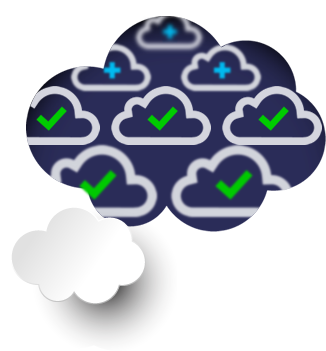Do you know the difference between disaster recovery and business continuity? Has your organization implemented a disaster recovery plan, and if so, how well are you prepared?
Let's start with a definition of each:
Disaster Recovery- The ability to recover data vital to your organization after a natural or human induced disaster. Examples include fire, floods, theft, or hardware failure.
Business Continuity- The ability to keep all aspects of operations functional in the midst of a disruptive event. This ensures your organization’s activities are not halted in the case of a disturbance. Regardless of what happens at your physical location, your data is protected, and can be accessed as if nothing had happened.
Cloud disaster recovery solutions, along with business continuity, eliminates environmental factors associated with hosting systems on premise. This is due to systems being hosted in a secure, highly available data center, in addition to an enterprise grade infrastructure with multiple redundancies and no single point of failure. In comparison, if you were to achieve the same level of recovery with an on premise solution, it will require significant capital investment.
The disaster recovery and business continuity benefits gained from the cloud can provide significant cost savings to your organization, which include:
- Cost of data loss - Whether it is one file, or your entire organization’s member database, the sensitivity or severity of data loss can have devastating implications to your organization, ranging from litigation/compliance liability, to significant financial losses.
- Cost of Restoration - If your organization were to recover from a disaster, the cost associated with the restoration of data can be significant, including procurement of equipment and the labor associated with recovery.
- Cost of opportunity and productivity - While your organization is recovering from a disaster, significant costs are incurred due to loss of employee productivity, damage to reputation and/or loss of current and/or potential revenues.
In order to determine the value a cloud hosted solution can provide your organization, begin by defining your risk tolerance. The purpose of this is to identify the essential functions within your organization, which when interrupted, would considerably disrupt operations, resulting in significant financial losses. By assigning a risk tolerance threshold to each of those essential functions, you are able to determine how long you can afford downtime for each application.
For example, in most organizations, email is a mission critical application. Not only does email serve as the communication lifeline of an organization, but if outside organizations cannot reach you, it can tarnish your reputation. By taking these first steps, you can determine which benefits which cloud hosted solutions can provide to your organization.
This article first appeared on the eXos Cloud Blog on October 7, 2014. eXos cloud services is provided by OSIbeyond, a trusted Managed IT service provider, specializing in the nonprofit & association community for over a decade. 
 Jason
Jason








